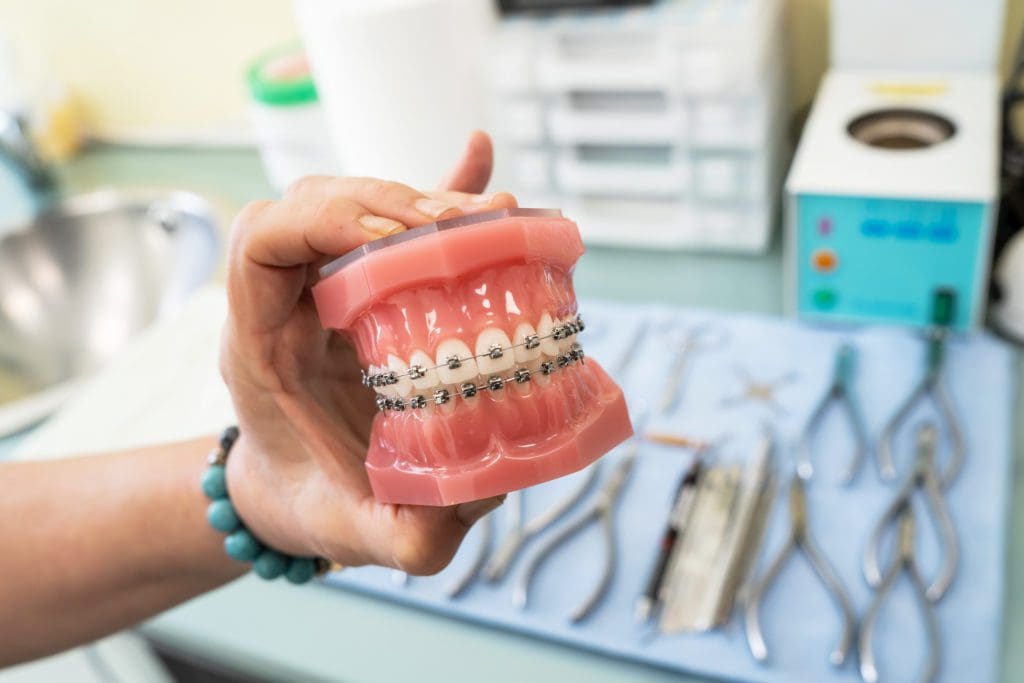How Cumming Orthodontics Addresses Common Braces and Invisalign Issues
How Cumming Orthodontics Addresses Common Braces and Invisalign Issues
Blog Article
Comprehensive Overview to Orthodontics Treatments for Remedying Dental Imbalances
Recognizing the intricacies of each treatment, including their devices, benefits, and possible downsides, is crucial in making informed decisions concerning one's orthodontic therapy. As we browse with the extensive guide to orthodontic procedures for fixing dental imbalances, the complex information of each technique will unfold, dropping light on the path toward a useful and unified oral alignment.
Orthodontic Procedures Overview

In addition to conventional dental braces and clear aligners, orthodontists may also advise various other interventions like headwear, palatal expanders, or retainers to resolve certain positioning issues (braces). These treatments are tailored to each person's distinct requirements and may involve a mix of therapies to achieve the preferred results. Normal modifications and monitoring are important parts of orthodontic treatment to make certain progress gets on track and to make any essential adjustments along the road. By going through orthodontic procedures, individuals can not only attain a straighter smile but likewise improve their overall dental health and function.
Conventional Braces: How They Work
When considering orthodontic therapies for oral imbalances, traditional braces stand apart as a tried and true technique for correcting teeth placing. Conventional braces contain braces, wires, and bands that interact to use constant stress on the teeth, progressively relocating them into the wanted placement. The brackets are affixed to the teeth making use of an unique adhesive, and the wires are threaded through the braces. By readjusting the stress of the wires, orthodontists can manage the instructions and pressure related to each tooth, guiding them into proper placement with time.
One key facet of just how standard braces job is the procedure of bone renovation. As pressure is put on the teeth via the braces, the bone bordering the teeth is reshaped to sustain the new tooth positions. This improvement is essential for the long-lasting stability of the corrected placement. People will require routine adjustments at the orthodontist's workplace to make certain the dental braces continue to use the correct pressure for effective teeth movement.
Undetectable Aligners: Disadvantages and pros
These clear, customized trays are virtually undetectable when worn, making them an enticing alternative for people looking for an extra visually pleasing orthodontic treatment. Individuals can remove the aligners prior to eating or cleaning their teeth, decreasing the threat of food getting stuck in the appliance and streamlining the cleaning procedure.

Surgical Orthodontic Options
Surgical interventions in orthodontics present practical choices for my review here dealing with complicated dental misalignments that may not be efficiently solved via traditional orthodontic therapies. While standard dental braces and undetectable aligners can fix lots of orthodontic concerns, particular instances call for medical treatment to attain optimum outcomes. Surgical orthodontic choices are normally advised for severe malocclusions, significant jaw discrepancies, and cases where the underlying bone structure requires modification to achieve appropriate placement.
One usual surgical orthodontic procedure is orthognathic surgical treatment, which includes rearranging the jaws to deal with useful problems such as problem talking or eating. This surgical treatment is typically done in partnership with an orthodontist who aids straighten the teeth before and after the procedure. Surgical orthodontics may additionally entail treatments to reveal influenced teeth, remove excess gum tissue, or improve the jawbone to create a more unified facial profile.
Before taking into consideration medical orthodontic alternatives, people go through a thorough examination to identify the necessity and possible benefits of such treatments. orthodontist. While surgical procedure might appear complicated, it can considerably boost both the function and a fantastic read aesthetics of the smile in instances where conventional orthodontic therapies fail
Retainers and Post-Treatment Care

Failing to abide with post-treatment treatment directions can result in regression, where the teeth progressively move back towards their initial settings. Consistent retainer wear, good dental hygiene, and normal dental check-ups are crucial for keeping the outcomes accomplished through orthodontic surgical treatment and guaranteeing the long-term stability of the remedied oral alignment.
Verdict
To conclude, orthodontic treatments offer numerous choices for fixing oral misalignments. Traditional dental braces utilize steel brackets and cables to shift teeth right into proper positioning. Invisible aligners give a more very discreet option but may not appropriate for all cases. Surgical orthodontic alternatives are available for much more severe imbalances. Retainers are frequently utilized post-treatment to maintain next the brand-new alignment. Overall, orthodontic procedures can efficiently enhance dental health and wellness and visual look.
As we browse with the comprehensive overview to orthodontic treatments for correcting oral misalignments, the elaborate details of each method will unravel, losing light on the course toward a functional and unified oral positioning. - cumming orthodontics
One of the most typical orthodontic treatments is the use of dental braces, which consist of metal braces and cables that apply gentle pressure to progressively move teeth into the preferred position.When taking into consideration orthodontic treatments for dental imbalances, standard dental braces stand out as a time-tested approach for fixing teeth placing. In addition, unseen aligners may not be suitable for intricate orthodontic concerns that call for even more substantial teeth motion, as they are generally recommended for mild to moderate instances. Retainers are tailor-made orthodontic tools designed to hold teeth in their dealt with positions after the completion of orthodontic treatment.
Report this page